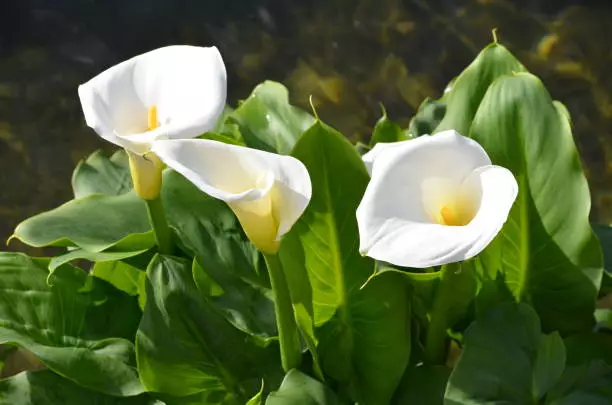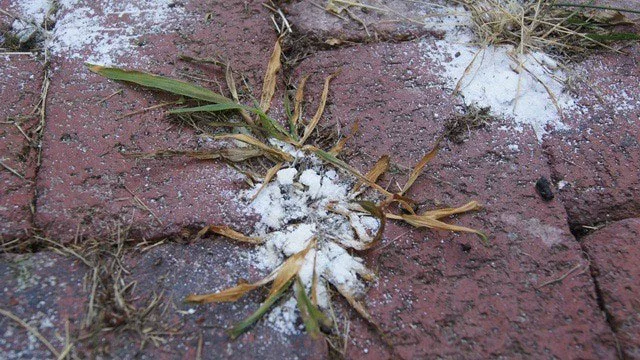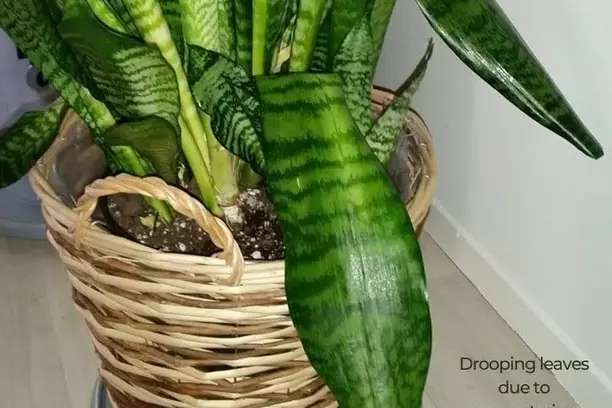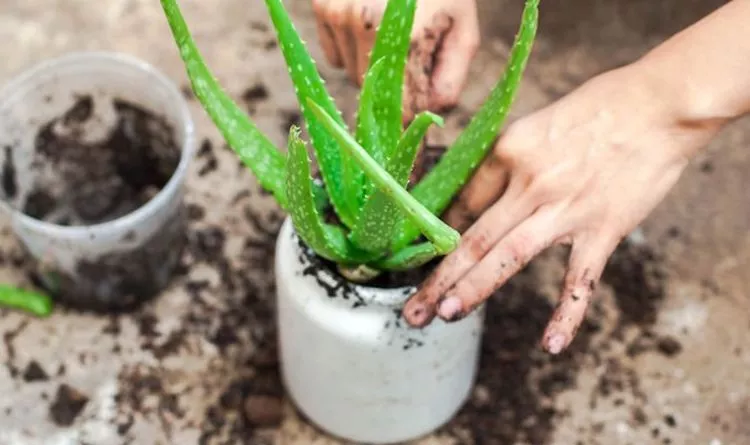Palm trees may seem easy to care for, but they require careful attention and regular inspections for diseases and infections. They are susceptible to several diseases, nutritional problems, and insect infestation. The diseases affect different palm tree parts, including the palm’s leaves, stems, and roots.
Most diseases and pests target weak palm trees. If you are new to palm tree care, you might not recognize the presence of a disease. For example, diseases can affect the growth rate of palm trees. If the tree’s growth is stunted, it could be a sign that the plant is diseased.
How can you tell a palm tree is diseased?
Different diseases, their severity, and their nature cause a palm tree to show various signs. Here are the signs your palm tree is diseased:
- Older fronds withering or roping
- Stunted growth
- Leaves turning yellow or pale green
- General discoloration of the plant
- Spotted or frizzled fronds
If a palm tree starts showing one or more of these symptoms, something is wrong. It is best to check the plant for problems and see if you can help it recover. Keep in mind that some common palm tree diseases such as root rot are caused by poor care practices such as overwatering your palm trees.
Some palm tree diseases are more deadly than others. Some are irreversible, while others are not. However, with the proper care, the tree will recover. Also, with the correct care routines, most of these palm diseases are preventable.
Here are the most common palm tree diseases:
1. Leaf spots and leaf blights
It is sometimes hard to spot the leaf spot fungi by only looking at the visual symptoms. Leaf spots can appear oily, circular, or elongated and form at the underside of the fronds. They first appear as small water-soaked spots and increase as the disease spreads. The spots turn brown, yellow, black, or gray, with the outer ring having a different color.
These spores are usually spread by water, wind, and poorly sanitized pruning equipment. Fortunately, in most cases, leaf spots can’t kill a palm tree.
Treatment for leaf spot
You can treat leaf spot fungus on palm trees if you start the regime early enough. Here’s how to treat your palm tree:
- Prune away the most infected fronds. In cases of severe damage, use fungicidal sprays that have copper.
- Apply a copper fungicide to eliminate leaf spot disease in palm trees.
Only copper fungicides are permitted if the palm fruits will be used for food.
Prevention
To prevent leaf spots when watering, avoid getting the palm leaves wet. Water your palms in the morning to ensure they don’t remain wet overnight. Also, try fertilizing the palms to boost their vigor and enable them to fight the leaf rots more effectively.
Sanitize your pruning tools to prevent the disease from spreading to other types of palm trees in your yard.
2. Ganoderma butt rots
Ganoderma butt rots is a deadly palm disease caused by a fungus called Ganoderma zonatum. This fungal disease affects different types of palm trees both indoor and outdoor varieties.
It invades the tree’s base to a height of 3-4 inches above the ground and works its way through the woody palm tree tissue, thus preventing the plant from transporting water up to the stem.
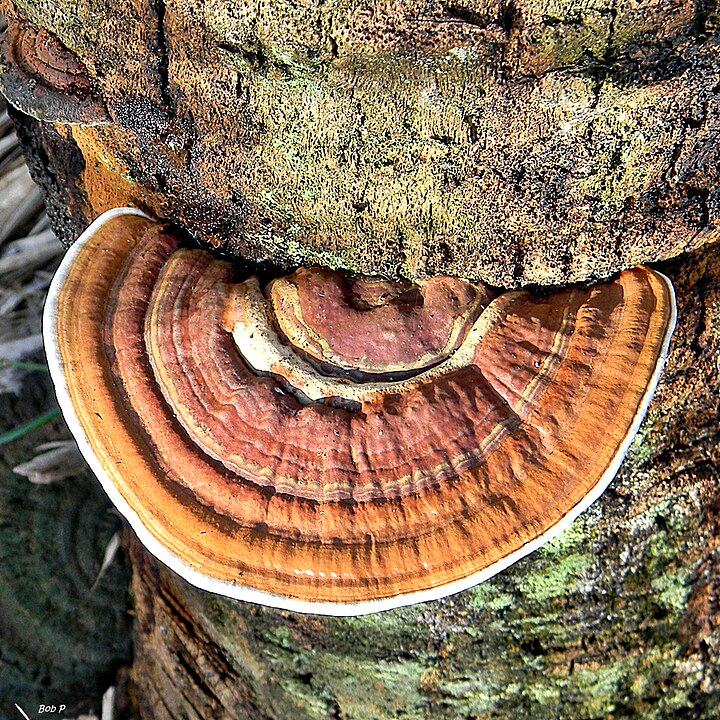
Signs
- Withering with older fronds bending easily.
- Stunted new growth.
- Leaves turn yellow or pale green in color.
- Rotting roots
- Weakened trunk.
Depending on when the disease attacks the plant, the trunk may collapse, the head of the palm fall off, and the roots become severely rotten.
One way to check if your palm tree is suffering from Ganoderma butt rot is to tap the trunk. While the trunk may seem solid, it will produce a hollow sound when tapped if it is diseased.
The disease can lead to the death of your palm tree depending on the age of the tree and the environmental conditions.
Treatment
Unfortunately, there’s no chemical treatment for the Ganoderma butt rot disease. To prevent the disease, remove and destroy any stumps, root systems, and trunks of dead plants in the landscape. During the planting period, avoid inflicting any injury to the plant. Also, conduct regular yard maintenance using string weed eaters.
Since Ganoderma pathogens survive in the soil, don’t plant any other palm in the same location.
3. Bud rot
Bud rot is a palm tree disease caused by fungal pathogens or bacterial pathogens. Normally, it occurs after a period of excess rain or tropical storm. The bacterial rots happen after the bud has been damaged by cold weather. Once the infection occurs, it’s unlikely to reverse the situation.
Symptoms
Here are the symptoms of bud rot in palm trees:
- Lack of new crown growth.
- Young fronds and buds start showing black lesions
- Wilting young buds and fronds
- A slimy rot on the buds of the affected palm trees.
The buds are often affected by a firm rot that may turn slimy later after the secondary invaders. Old fronds remain green for several months and are often the last to die.
Treatment and prevention
To prevent the infection, avoid overhead irrigation whenever possible. Remove any infected plants and destroy them to reduce the further spread of the disease. Apply preventative fungicides containing copper to the plants exposed to these diseases.
Always apply the fungicide and spray at the right intervals according to the directions on the labels.
4. False smut
False Smut is also known as Graphiola leaf spot as graphiola species cause the disease. It’s a common palm tree disease in areas with high humidity. False smut affects only the palms of the Aceraceae family.
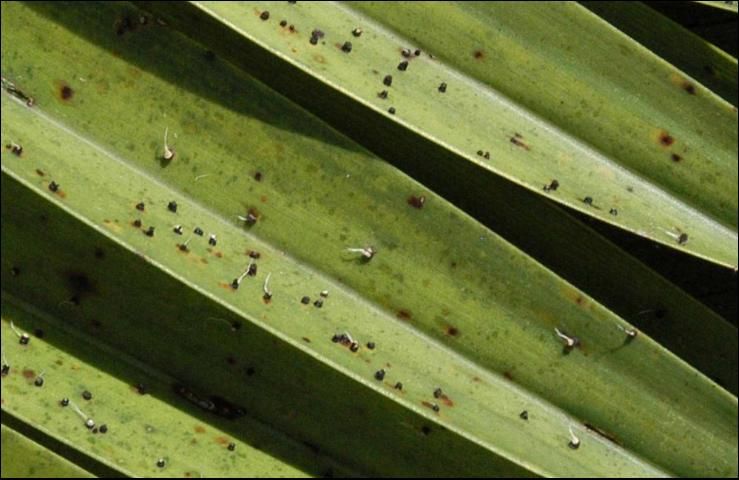
Symptoms
Once infected, the leaves develop small, black wart-like structures that appear on both leaf surfaces. The black spots may have tiny filaments. Often, the youngest leaves don’t show any sign.
Treatment
Remove any severely affected leaves to minimize the spread of the disease. Do not remove too many fronds, as this may be more damaging to the palm tree than the disease. Since palm trees are easily susceptible to nutritional deficiencies, removing the fronds can easily weaken the tree and worsen the existing problems.
Prevention
- Improve air circulation – To prevent the disease, properly space your palm to allow for plenty of air circulation and reduce the humidity.
- During irrigation, avoid wetting the fronds.
5. Fusarium wilt
Fusarium wilt is a palm tree fungus caused by Fusarium oxysporum. The disease has different strains specific to the various species of palm trees. Since it has no cure, your palm tree will likely die when affected by this disease.
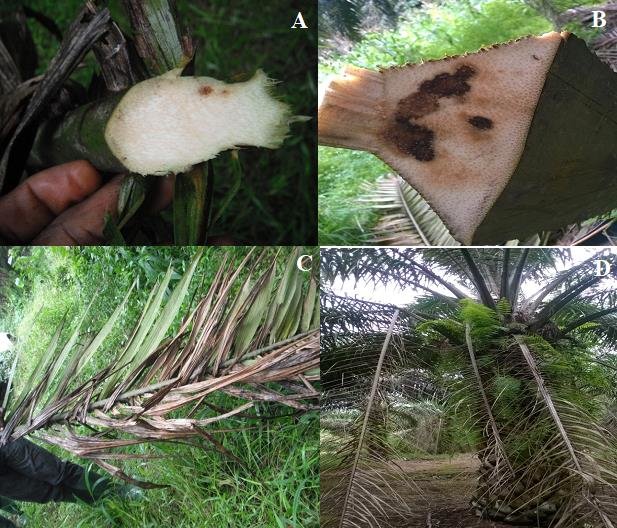
Signs
The signs include discolored, brown, and wilting fronds. The palm then loses its green color and eventually dies. The symptoms normally start near the bottom of the fronds before making their way upwards.
There is no cure for the disease, and once affected, you may need to get rid of the tree.
Care and prevention
There are no controls or treatments for this disease so learning the symptoms and how to prevent it are key. However, by providing the proper care to the plant, you can extend its life span. Here are a few tips to care for your palm trees and prevent fusarium wilt:
- Remove the affected fronds and dispose of them carefully to avoid spreading the disease to other palm trees.
- Water and fertilize the tree just enough to prevent excesses.
- Apply a fungicide that contains thiophanate-methyl regularly to prevent fungal attacks.
Although the fungicide won’t cure the fusarium wilt, it helps prevent and treat other opportunistic infections like pink rot that often weaken the plant.
6. Lethal yellowing
Phytoplasma, a microscopic organism, causes lethal yellowing disease in palm trees. This disease attacks the plant in phases and is spread by planthoppers, affecting many varieties of palm trees.
Since the planthopper (Haplaxius crudus) is native to Florida, palm trees in Florida are highly susceptible to the effects of this palm tree infection.
Signs and symptoms
- Fruit drop: The first and the most obvious phase is the premature drop of almost all the fruits on the plant.
- Black patches on fruits: The fallen nuts have browned areas or blackened areas in places where they were attached to the stem.
- Wilting flowers: All new male flowers in the plants often blacken from the tips and wilt before dying.
- Yellowing of leaves: The fronds turn yellow, with the yellowing starting from the fronds before advancing to the top of the tree. Insects majorly spread the disease.
Treatment
If the infection is slight, root injections could help in treating the tree. However, if most of the palm tree is affected by lethal yellowing disease, it needs to be removed and replaced with resistant species. This also prevents the further spread of illness to other palms.
7. Pink rot
Pink rot is considered a secondary disease, and it can affect any part of the palm tree. Since palm trees can’t repair wood tissues, they are likely to be attacked by pink rot when pruned too severely or damaged.
Signs
The disease results in stunted or deformed growth, leaf spots, and rots. The most obvious sign is the visible pink spore masses. Sometimes, pink rot produces a brown syrup-like ooze.
Treatment and prevention
To prevent pink rot disease in palm trees, always keep the palms as healthy as possible or plant the tree at a deeper depth. Most palm tree roots spread at a depth up to 36 inches or more.
Also, avoid injury to the palm tree with pruning tools or any other gardening materials. After pruning, apply fungicide to protect the tree. Always follow the label instruction to apply the correct amount of fungicide at the right intervals.
8. Diamond scale
Diamond scale is caused by a fungus called Phaeochoropsis neowashingtoniae. It produces diamond-shaped fruiting, normally on the palm trees’ foliage. The disease is more common in coastal areas and some inland valleys.
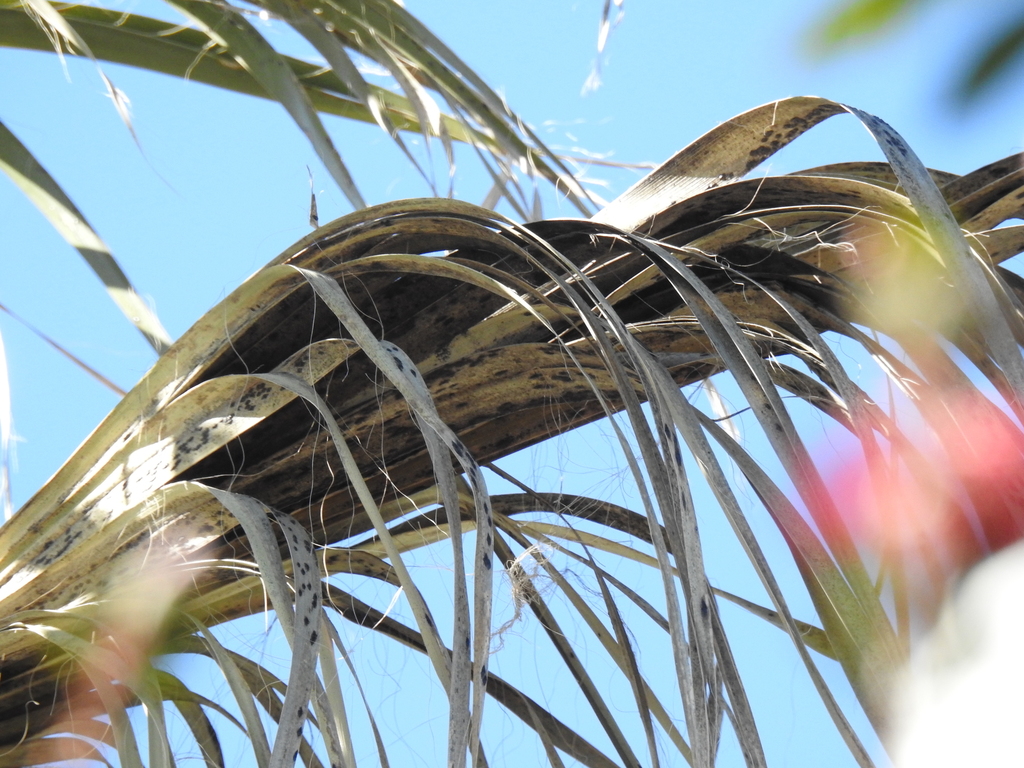
Signs
Tiny watery-looking dark spots form and grow to diamond-shaped fruiting on the lower and upper surfaces of the leaves and leave stalks. The leaves first turn yellow before browning.
Prevention
To prevent further spread, replace the badly infected trees with resistant species. Always strive to keep the unaffected trees healthy and supply water as needed. Check on the drainage and correct it if necessary as overwatering can worsen the diamond scale in palm trees.
9. Sooty mold
Sooty mold is a fungal disease that feeds on the honeydew produced by palm aphids, mealybugs, and scale insects. It appears as black or ashy gray mold on fronds. Although it doesn’t cause major harm to a palm tree, its sight is often ugly.
Signs
Sooty mold disease forms a black covering on the leaves and is associated with the infestation of insects. The soot appears on the trunk but mostly on the leaf surface. The mold easily washes off the palm leaves as it does not attack the plant directly.
To prevent the disease from reoccurring, control the sucking insects that produce honeydew such as aphids. For smaller palms, sprayers are effective.
However, for mature and taller palms, use systemic treatments as they are difficult to spray.
10. Root rot disease
Anaerobic conditions due to overwatering or waterlogging cause root rot in many plants. Palm trees are especially highly prone to root rot when growing in poorly-draining soil.
Signs and symptoms of root rot
The symptoms include:
- The tree rotting at the base
- Mushy, rotting roots
- Stunted growth
- Leaves turning yellow
- Infected roots are dark and soft as compared to healthy ones.
Treatment
To treat the affected plants, trim away the infected roots using pruning shears. Cut the roots as closely as possible to the root ball and dispose of them carefully. Replant the palm tree in another area and give it new life. Lastly, apply fungicides like the thiophanate-methyl to cure this plant.
11. Thielaviopsis trunk rot
Thielaviopsis trunk rot is a palm disease caused by the fungus called Thielaviopsis paradoxa. The disease causes the palm tree trunk to collapse on itself. The major sign is always the stem bleeding, with the lowest leaves hanging down the canopy and dying prematurely.
The fungus affects fresh trunk wounds. Sometimes the canopy suddenly falls off the trunk, despite appearing healthy, before collapsing.
Once infected, get rid of the palm and destroy the diseased trunk portion. To prevent the disease, limit the man-made wounds on the trunk, especially on the upper third of the trunk.
Palm tree diseases often attack weakened trees. Healthy palms resist pests and also diseases. Therefore, keep your palm trees healthy through proper care – provide the right growing conditions, water adequately, and fertilize when necessary. Catching the disease early and starting the treatment immediately reduces the impact the disease might have on the tree.
